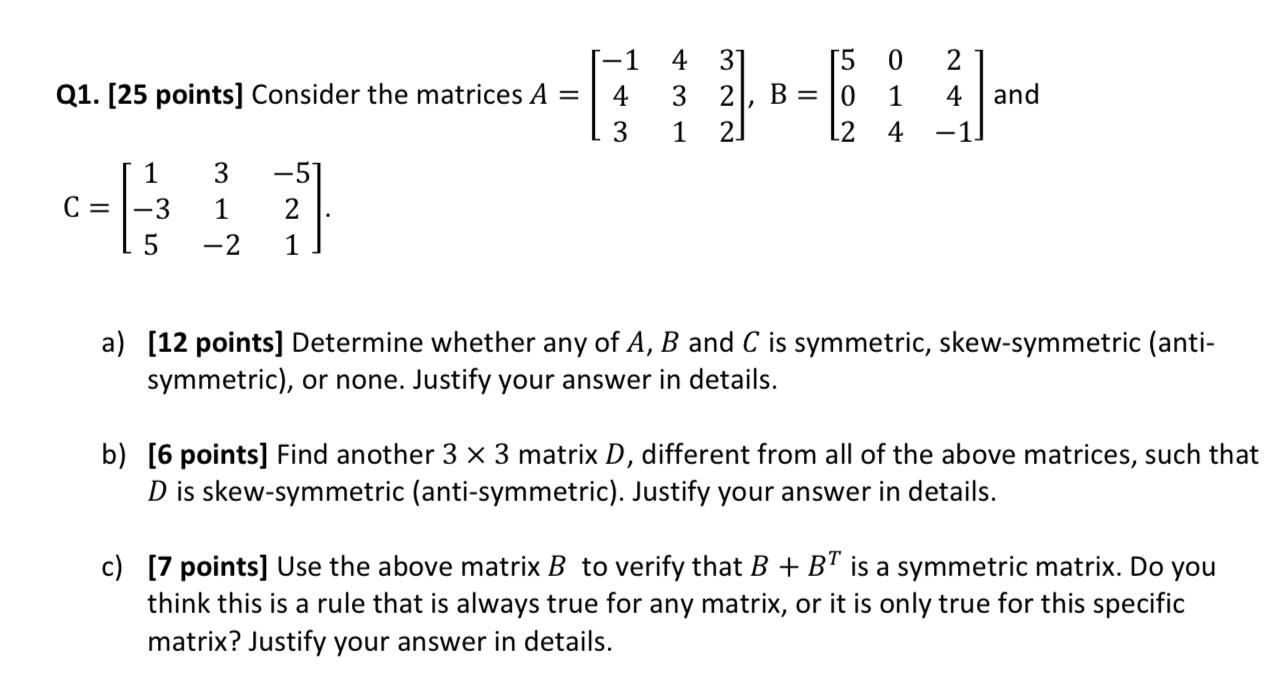Question
-1 4 3] [5 2 Q1. [25 points] Consider the matrices A = 4 3 B = 1 4 and 3 1 2. 12

-1 4 3] [5 2 Q1. [25 points] Consider the matrices A = 4 3 B = 1 4 and 3 1 2. 12 4 -1 1 -5] C = -3 1 2 -2 1 a) [12 points] Determine whether any of A, B and C is symmetric, skew-symmetric (anti- symmetric), or none. Justify your answer in details. b) [6 points] Find another 3 3 matrix D, different from all of the above matrices, such that D is skew-symmetric (anti-symmetric). Justify your answer in details. c) [7 points] Use the above matrix B to verify that B + B" is a symmetric matrix. Do you think this is a rule that is always true for any matrix, or it is only true for this specific matrix? Justify your answer in details.
Step by Step Solution
3.39 Rating (146 Votes )
There are 3 Steps involved in it
Step: 1

Get Instant Access to Expert-Tailored Solutions
See step-by-step solutions with expert insights and AI powered tools for academic success
Step: 2

Step: 3

Ace Your Homework with AI
Get the answers you need in no time with our AI-driven, step-by-step assistance
Get StartedRecommended Textbook for
Numerical Analysis
Authors: Richard L. Burden, J. Douglas Faires
9th edition
538733519, 978-1133169338, 1133169333, 978-0538733519
Students also viewed these Mathematics questions
Question
Answered: 1 week ago
Question
Answered: 1 week ago
Question
Answered: 1 week ago
Question
Answered: 1 week ago
Question
Answered: 1 week ago
Question
Answered: 1 week ago
Question
Answered: 1 week ago
Question
Answered: 1 week ago
Question
Answered: 1 week ago
Question
Answered: 1 week ago
Question
Answered: 1 week ago
Question
Answered: 1 week ago
Question
Answered: 1 week ago
Question
Answered: 1 week ago
Question
Answered: 1 week ago
Question
Answered: 1 week ago
Question
Answered: 1 week ago
Question
Answered: 1 week ago
Question
Answered: 1 week ago
Question
Answered: 1 week ago
Question
Answered: 1 week ago
Question
Answered: 1 week ago
Question
Answered: 1 week ago
View Answer in SolutionInn App



